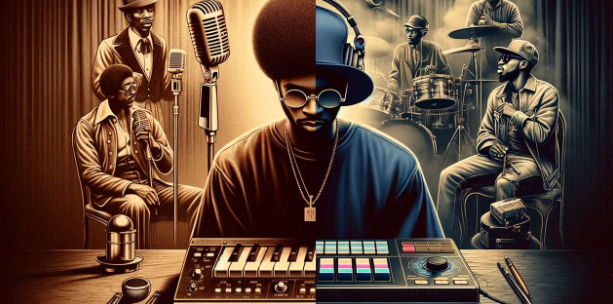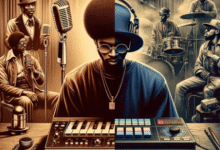The Evolution and Influence of R&B Songs

Rhythm and Blues, commonly known as R&B, is one of the most powerful and influential music genres in the world. R&B songs have shaped popular music for decades, from soulful ballads to modern-day chart-topping hits. The term “R&B” was first used in the 1940s to describe a style of African American popular music that combined jazz, blues, and gospel. Over time, R&B songs have evolved into many forms, influencing hip-hop, pop, funk, and even electronic music.
Today, when people hear R&B songs, they think of smooth vocals, emotional storytelling, and deep beats that connect with the heart. But R&B is much more than just a style of singing. It’s a cultural expression that reflects the struggles, dreams, and joys of communities. From the soulful voices of legends like Aretha Franklin and Marvin Gaye to the modern sounds of Beyoncé, Usher, and The Weeknd, R&B songs continue to inspire and bring people together across generations.
The Origins of R&B Songs
R&B songs began in the 1940s, rooted in African American culture. At that time, it was called “race music” before Billboard officially changed the term to “Rhythm and Blues.” Early R&B artists like Louis Jordan, Ruth Brown, and Ray Charles laid the foundation with music that combined jazz rhythms, gospel passion, and blues storytelling. These songs were often upbeat, danceable, and full of energy, which made them popular in clubs and gatherings.
The 1950s saw R&B songs spreading beyond African American communities, reaching mainstream audiences. This period also gave birth to rock and roll, which was heavily influenced by R&B. Artists like Little Richard and Chuck Berry crossed over into rock but kept the R&B spirit alive. This was the beginning of R&B shaping global music trends.
R&B Songs in the 1960s and 1970s: The Soul Era
The 1960s and 1970s are often called the golden era of soul music, a branch of R&B. Singers like Otis Redding, Aretha Franklin, James Brown, and Stevie Wonder defined the sound of this time. Their R&B songs carried strong messages of love, heartbreak, empowerment, and social justice.
Motown Records, founded by Berry Gordy in Detroit, became one of the biggest forces in spreading R&B worldwide. With artists like The Supremes, Marvin Gaye, and The Temptations, Motown produced polished and catchy R&B songs that appealed to both Black and white audiences. This was groundbreaking because it helped break racial barriers in the music industry.
During the 1970s, funk also emerged from R&B. Bands like Earth, Wind & Fire and Parliament-Funkadelic created energetic R&B songs with heavy basslines and rhythmic grooves that made people dance. The soul and funk era showed that R&B could be both emotional and fun, political and playful.
R&B Songs in the 1980s: Modernization and Innovation
The 1980s brought technology into R&B. Drum machines, synthesizers, and electronic production changed how R&B songs sounded. Artists like Michael Jackson, Whitney Houston, and Prince took R&B to global stages with a modern twist.
Michael Jackson’s “Thriller” became the best-selling album of all time, blending pop and R&B perfectly. Whitney Houston’s powerful ballads made R&B songs mainstream on radio stations across the world. Prince pushed boundaries by mixing R&B with funk, rock, and pop, proving the genre’s versatility.
This decade also saw the rise of “quiet storm” R&B songs, which were slow, romantic, and smooth. Artists like Luther Vandross and Anita Baker specialized in love ballads that defined the sound of R&B for couples and late-night radio shows.
The 1990s: The Golden Age of Contemporary R&B Songs
Many music fans consider the 1990s as the peak of R&B songs. This era produced timeless classics and legendary artists. Groups like Boyz II Men, TLC, Jodeci, and Destiny’s Child dominated the charts with soulful harmonies and catchy hooks. Solo artists such as Mary J. Blige, R. Kelly, Brandy, and Usher created R&B songs that balanced raw emotion with commercial appeal.
This period also saw the blending of R&B and hip-hop. Artists like Aaliyah and producers like Timbaland and Missy Elliott gave R&B songs futuristic beats and rhythms. The partnership between rappers and R&B singers became a new formula for hit songs, and it continues today.
2000s R&B Songs: Mainstream Success
In the 2000s, R&B songs were everywhere—on the radio, in movies, and on television. Beyoncé, Alicia Keys, Chris Brown, Ne-Yo, and Usher became global superstars, carrying the R&B tradition into the new century. Songs like Usher’s “Yeah!” and Alicia Keys’ “Fallin’” showcased the versatility of R&B, from upbeat dance tracks to soulful ballads.
R&B songs also became more closely tied to pop music during this time. Many R&B artists crossed over to pop charts, making the genre even more accessible worldwide. At the same time, hip-hop collaborations kept R&B songs relevant with younger audiences.
Modern R&B Songs: The 2010s and Beyond
Today’s R&B songs are more diverse than ever. Some artists stick to classic soulful styles, while others experiment with futuristic sounds. The Weeknd, Frank Ocean, H.E.R., and SZA are some of the artists leading the modern R&B wave. Their songs often combine traditional R&B vocals with electronic beats, trap influences, and alternative sounds.
Streaming platforms like Spotify and YouTube have helped R&B songs reach audiences worldwide faster than ever. While some critics argue that R&B has become less distinct from pop and hip-hop, others believe the genre is evolving naturally to reflect new generations.
Themes in R&B Songs
Throughout its history, R&B songs have touched on themes that people can relate to:
- Love and heartbreak: One of the most common subjects in R&B songs, from slow ballads to upbeat breakup anthems.
- Empowerment and confidence: Many R&B songs encourage self-love, strength, and pride.
- Social justice: Especially during the 1960s and 1970s, R&B songs were used to spread awareness about civil rights and equality.
- Celebration and fun: Danceable R&B tracks keep the genre alive at parties, clubs, and events.
The Global Impact of R&B Songs
R&B songs are not only popular in the United States but also across the globe. Many international artists, from the UK’s Craig David to Korea’s K-R&B scene, have embraced the genre. R&B’s emotional power and universal themes make it relatable to people regardless of language or culture.
The genre has also influenced fashion, dance, and even social movements. From the Motown era to modern-day concerts, R&B songs bring people together through rhythm and storytelling.
Conclusion
R&B songs have traveled a long journey, from their roots in African American communities to becoming one of the world’s most popular genres. They continue to evolve, blending with hip-hop, pop, and electronic sounds, while still keeping their soulful essence. Whether it’s a love ballad, a dance anthem, or a song about empowerment, R&B connects with listeners on a deep level.
As music continues to change, one thing is certain: R&B songs will always have a place in our hearts and in the history of music.
FAQs
Q1: What does R&B stand for?
R&B stands for Rhythm and Blues.
Q2: Who are some of the greatest R&B artists of all time?
Legends include Aretha Franklin, Stevie Wonder, Whitney Houston, Michael Jackson, Usher, Beyoncé, and The Weeknd.
Q3: What makes R&B songs unique?
R&B songs are known for soulful vocals, emotional lyrics, and strong rhythms that connect with listeners emotionally.



